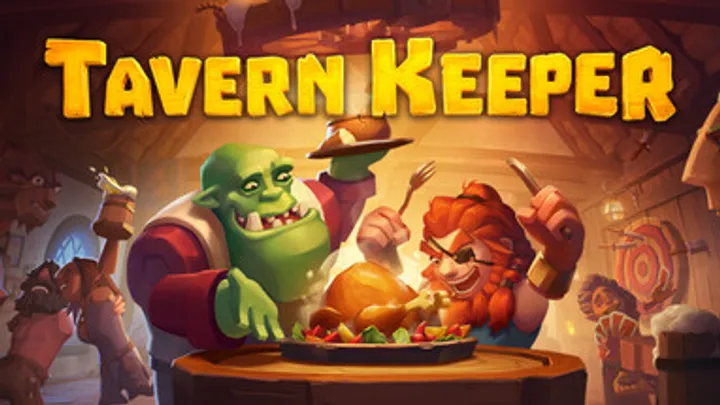
Introduction
Cult of the Lamb, developed by Massive Monster, is an engaging blend of roguelite mechanics and management sim wrapped in a charming yet macabre aesthetic. Players take on the role of a lamb who, after being saved from death by a mysterious deity, is tasked with building a cult to revere this newfound power. The game intricately weaves together themes of faith, devotion, and the darker sides of cult leadership, raising a significant issue: the balance between player agency and control. While players revel in the freedom to shape their cult, the game’s underlying mechanics also force them to navigate authoritarian leadership and the consequences of blind devotion. This article will delve deeply into the issue of faith versus control in Cult of the Lamb, examining how this dynamic influences gameplay, narrative, and player engagement.
The Cult's Rise: Setting the Stage
Introduction to the Cult
In Cult of the Lamb, players are thrust into a vibrant, hand-drawn world rife with humor and horror. The premise begins with the lamb character being resurrected by the mysterious "One Who Waits" and tasked with amassing followers to establish a successful cult. As players venture through various procedurally generated regions, they are met with creatures ripe for recruitment to their cause, each bringing unique traits and stories.
Player Agency and Cult Management
At its core, Cult of the Lamb offers players a profound degree of agency in building and managing their cult. Players can decorate their base, tend to their followers’ needs, and choose their religious doctrines. This empowerment creates a thrilling sense of agency, allowing for personal expression in how the cult is shaped. However, this freedom can quickly devolve into authoritarian control, presenting moral dilemmas alongside gameplay mechanics.
Themes of Faith and Power
The game juxtaposes the vibrant joy of cult-building with the darker implications of such power. While players may begin with noble intentions, the pressure to maintain control can lead to increasingly oppressive strategies. This duality provokes thought about the ethical implications of leadership and the nature of faith—does devotion justify tyranny?
The Game Mechanics: Balancing Leadership and Devotion
Rituals and Doctrines
As players expand their cult, they can perform rituals and enforce doctrines that yield various benefits. These serve as the backbone of the cult’s structure, presenting opportunities for players to solidify their power while nurturing follower devotion. For instance, players can establish doctrines to encourage faith, improve production, or even create fear among followers through punishments.
Types of Doctrines
- Faith Doctrines: Enhance follower loyalty and generate more devotion.
- Cleansing Doctrines: Instill fear through public executions to maintain control.
- Material Doctrines: Increase resource production, improving the cult's economy.
The Pressure of Control
While these rituals can lead to beneficial outcomes, they also come with inherent risks. The choice to instill fear or manipulate followers can lead to discontent if not managed wisely. Followers can become sick, die, or even revolt against the player, creating tension between leadership and loyalty.
Consequences of Choices
- Follower Unrest: Choosing punitive doctrines may maintain short-term control but could lead to long-term dissatisfaction and rebellion.
- Resource Management: The cost of conducting rituals may drain resources, potentially crippling the cult if not carefully balanced.
- Moral Implications: The moral weight of manipulating or sacrificing followers forces players to confront their leadership style and its consequences.
Navigating the Cult's Landscape
Players must navigate these complex choices, balancing control while attentively managing the well-being of their followers. The delicate equilibrium creates engaging gameplay but can also become burdensome, particularly when decisions lead to unforeseen ramifications. This mechanic compels players to consider the long-term impacts of their choices instead of just the immediate benefits.
The Role of Followers: Agency and Objectification
Recruiting and Managing Followers
In Cult of the Lamb, followers are not merely resources; they are characters imbued with unique traits and backstories. Players recruit followers from different regions that convey distinct personalities and motivations, enriching the narrative experience while providing various gameplay mechanics.
Traits and Preferences
- Positive Traits: Some followers may produce resources faster or recover from illnesses rapidly.
- Negative Traits: Others may have detrimental behaviors, such as dissenting or spreading negative morale among peers.
- Personal Beliefs: Followers can also have beliefs that influence their receptiveness to particular doctrines, making some susceptible to fear while others might resist.
The Objectification of Followers
Despite their individual traits and backstories, followers can be objectified in the pursuit of greater cult loyalty. Players may find themselves making harsh decisions for efficiency’s sake—sacrificing or punishing followers to ensure the cult’s prosperity. This raises pressing ethical questions about the nature of leadership and the treatment of those who place their faith in the player.
Engagement vs. Detachment
As players develop their cult, the initial sense of attachment to followers can shift towards detachment as they become mere statistics in a larger system of control. The delicate balance between nurturing and manipulating each character creates a moral dilemma.
The Consequences of Objectification
The objectification of followers can lead to various outcomes, including:
- Follower Rebellion: Dissatisfaction among followers can culminate in a rebellion, undermining the very structure players have sought to build.
- Loss of Trust: Treating followers as mere resources may erode loyalty and hinder commitment to the cult.
- Narrative Implications: Casualties resulting from harsh decisions can impact the overarching narrative, leading to altered storylines based on the relationships formed or broken.
The Moral Dilemmas of Leadership
The Ethical Landscape
Cult of the Lamb navigates a complex ethical landscape where players must confront the implications of their choices within the cult. The dynamics of leadership and the pressures of control come into play as players grapple with whether their means justify the ends.
Justifying Actions
Players can choose to enact brutal punishments or implement fear tactics under the facade of "for the greater good." This raises powerful ethical dilemmas: does achieving the cult's goals excuse the sacrifices and harsh treatment of followers? The game invites players to reflect on their values as cult leaders and the moral consequences of their decisions.
Internal Conflicts
- Balancing Ruthlessness and Kindness: Players may experience internal conflicts as they weigh compassion against harsh leadership, struggling to identify the right path.
- Questioning Intentions: Players may ask themselves if they are truly leading for a cause or merely consolidating power through manipulation.
Emotional Stakes
The emotional engagement offered by these dilemmas can provoke profound introspection. As players witness their actions manifest in the cult's fate and follower responses, they must grapple with the moral implications of their leadership style.
The Cycle of Devotion and Rebellion
Fostering Devotion
Cultivating devotion among followers is crucial for maintaining control in Cult of the Lamb. Players can earn the loyalty of their cultists through ceremonies, fulfilling needs, and rewarding loyalty. As devotion grows, the cult thrives, unlocking new opportunities for expansion and rituals.
Building Loyalty
- Ceremonies: Celebrating milestones or achievements fosters a sense of community and belonging.
- Fulfilling Needs: Providing for followers aligns with their needs—food, shelter, and morale boosts—and contributes to increased devotion.
- Personal Connections: Engaging with followers as individuals can build rapport, solidifying trust and loyalty.
The Threat of Rebellion
Devotion can be fragile, easily shattered by punitive tactics or neglect. If players sacrifice followers or become overly authoritarian, they risk inciting rebellion. Cult leaders must continually balance their methods to prevent destructive consequences.
Triggers for Rebellion
- Neglect: Ignoring followers' needs or consistently punishing them can lead to dissatisfaction and potential revolt.
- Fear: Relying solely on fear tactics may dissuade loyalty, as followers may feel compelled to escape rather than commit.
- Loss of Trust: Breaking promises or failing to uphold beliefs can deteriorate the bond between the leader and the coven.
The Impact on Gameplay Dynamics
This cycle of devotion and rebellion adds tension to gameplay, pushing players to consider their actions within the broader canvas of their cult. Fostering a sense of loyalty can lay the groundwork for expansion, while failing to maintain trust can lead to rapid decline. The intricacies of these dynamics highlight the need for nurturing as much as control.
The Consequences of Sacrifice
The Sacrificial Aspect of Cult Leadership
In Cult of the Lamb, cult leaders are often faced with sacrifices. This can manifest through rituals demanding the loss of followers for divine favor or power, provoking players to question their values and principles.
Ethical Implications of Sacrifice
- Value of Life: Players must reckon with the moral implications of sacrificing followers who have trusted them, fundamentally challenging the nature of leadership.
- Leadership vs. Power: The choice to sacrifice can blur the lines between benevolent leadership and tyrannical control. Cult leaders are faced with difficult decisions that impact not only gameplay but also the player's ethical compass.
The Emotional Toll
The act of sacrifice carries emotional weight, potentially leading to disillusionment among players. While some may choose to view it as a calculated decision, others may develop feelings of guilt and remorse as they watch their friends fall.
Tension between Goals and Ethics
Players need to decide whether the ends truly justify the means. This tension fuels player engagement, as individuals grapple with the consequences of their choices, creating memorable moments that linger beyond gameplay.
The Blend of Aesthetics and Themes
Artistic Direction
Cult of the Lamb features a striking visual style that contrasts the lighthearted, cartoonish graphics with dark themes surrounding cults and sacrifice. The art mirrors the complexity and duality of the narrative, drawing players into a world that is as charming as it is haunting.
Symbolism in Design
The aesthetic choices reinforce the thematic undertones present throughout the game. The juxtaposition of cute characters and macabre actions creates a constant tension that feels both whimsical and frightening.
- Visual Irony: The cartoonish design elicits charm while simultaneously confronting players with grim realities.
- Color Palette: Bright colors foster a sense of allure, while darker themes explore the macabre aspects of cult leadership.
- Symbolic Imagery: Iconography related to devotion and sacrifice is thoughtfully incorporated into the visuals, immersing players in the thematic experience further.
Enhancing Emotional Resonance
This blend of aesthetics and theme deepens emotional responses, creating an inherent dissonance that pushes players to confront the darker aspects of their choices. As they navigate whimsical visuals, they are met with sobering decisions that provoke thought about loyalty, ethics, and power.
Community Engagement and Future Developments
Reception and Impact
Upon release, Cult of the Lamb was met with widespread acclaim, with players praising its unique blend of gameplay mechanics, narrative depth, and artistic design. However, as with any game that touches on contentious themes, perspectives on leadership and morality within the cult experience brought mixed reactions.
Engagement with Player Feedback
Massive Monster has actively engaged with the player community, considering feedback for future updates and content expansions. Understanding player experiences related to choice, sacrifice, and faith allows developers to shape and enhance future iterations of the game.
The Value of Community Input
- Listening to Concerns: Addressing player concerns regarding balance in gameplay mechanics can help fortify player investment in the emotional and narrative experience.
- Expanding on Themes: Engaging with the community may unlock opportunities for thematic exploration, expanding on the complexities of cult leadership within further content.
- Creating Collaborative Experiences: Inviting players to share their paths can cultivate a sense of community, allowing for shared experiences that enhance the game narrative.
Future Directions
As Massive Monster considers future updates and expansions, the challenge lies in maintaining the balance of agency, emotion, and ethical reflection. By fostering an environment of openness and dialogue, the developers can refine and define the cult experience, ensuring that the following games resonate with a broad audience.
Conclusion
Cult of the Lamb successfully marries gameplay mechanics, aesthetics, and narrative complexity, inviting players into a world rife with themes of faith, control, and sacrifice. The balance of player agency and ethical implications surrounding leadership creates a uniquely engaging experience that provokes heartfelt reflection.
While the game shines in its capacity to challenge players through difficult choices, it also demands vigilance regarding its treatment of followers and themes of power. As players navigate these moral complexities, Cult of the Lamb expands beyond being just an entertaining experience—it becomes a journey of introspection, challenging leadership styles and moral foundations that linger long after the last sacrifice is made.

















